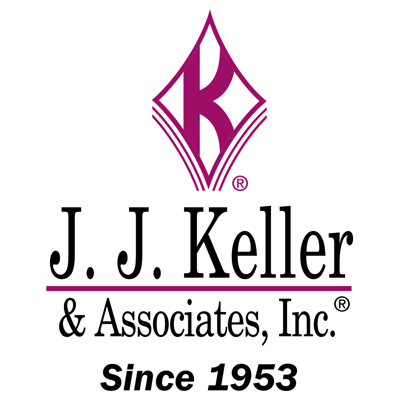Industry Business Advisor, J. J. Keller and Associates, Inc
The ABCs of the CSA’s Unsafe Driving BASIC

Unsafe driving behaviors by commercial motor vehicle drivers were cited over 250,000 times last year by law enforcement under the FMCSA’s CSA program.1 And those were the behaviors that were caught, representing a mere fraction of total unsafe driving events that happen every year.
It’s critical to consider these staggering numbers because the behaviors listed in the CSA Unsafe Driving BASIC category have a high correlation to crash risk. For example, one study identified that carriers above the intervention threshold on Unsafe Driving experienced a 93-percent increase in their crash rate compared to the national average.2 When fleets allow these behaviors, it’s a matter of time before an accident happens.
Carriers can, however, improve their scores. But first, let’s look at the ABCs of the Unsafe Driving BASIC.
A is for Accountability
The third letter in CSA is an "A," which stands for accountability. The program is designed to put drivers and carriers figuratively "into the driver's seat."
B is for Behavior Modification
The first word in the BASIC acronym is “behavior." Measuring and modifying unsafe behavior is what the CSA program is all about. Improving business processes, organization culture, and profitability requires behavior modification. It’s the adage, “keep doing the same things, keep getting the same results.” Unfortunately, when it comes to unsafe driving, not improving behavior may mean a greater likelihood of accidents, expensive litigation, lost productivity due to out-of-service orders, fines, and high driver turnover.
C is for Common Violations
The Unsafe Driving BASIC has over fifty different violations associated with it, and the order of common violations stays nearly the same year-over-year. But all violations are not created equal— some behaviors are more dangerous than others. The more dangerous behaviors (those more likely to result in an accident) have a higher severity rate in the CSA methodology. Severity rates are listed on a scale of 1-10, with the behaviors most likely to lead to crashes having a severity rate of 10.
Top 10 Unsafe Driving behaviors (cited over 6,000 times per year)
|
Violation Description |
Severity Rate |
|
Speeding 6-10 miles per hour over the speed limit. |
4 |
|
Failure to obey traffic control device |
5 |
|
Lane Restriction violation |
3 |
|
Speeding 11-14 miles per hour over the speed limit. |
7 |
|
Speeding 15 or more miles per hour over the speed limit. |
10 |
|
Failure to Maintain Lane |
5 |
|
Speeding work/construction zone. |
10 |
|
Unlawfully parking and/or leaving vehicle in the roadway |
1 |
|
Following too close |
5 |
|
Improper lane change |
5 |
Top 3 Unsafe Driving behaviors – by severity (cited between 7,000 and 30,000 times per year)
|
Violation Description |
Severity Rate |
|
Speeding 15 or more miles per hour over the speed limit. |
10 |
|
Speeding work/construction zone. |
10 |
|
Speeding 11-14 miles per hour over the speed limit. |
7 |
How Can You Improve Your Unsafe Driving CSA Scores?
The power lies in understanding how to uncover, identify, and use key metrics to improve behaviors.
Leverage Technology
The technology in today's vehicles, like road- and driver-facing cameras, electronic logging devices (ELDs), and real-time location tracking (GPS), were built to help carriers and drivers operate much safer than just a few years ago. They capture a wealth of data related to dangerous driving, including speeding, failure to yield, and hard braking — three of the most significant indicators contributing to the risk of future accidents.
Track & Trend Your Data
While the technology mentioned above spins off a tremendous amount of data, it’s critical to know which data is noise and which are your crucial safety levers. Tracking data lives in the space of "winners keep score." Companies that effectively modify behavior "know the score" at the driver, terminal, shop, driver manager, and dispatcher levels. Trending your data answers these questions and helps you to determine if corrective actions are impactful.
Insurance underwriters are keenly interested in knowing your compliance trendlines and whether you use technology. In this area, no news is not good news. Without data to substantiate your safety program, underwriters will assume that either the technology is not in place or that your data paints a high-risk picture. If you use technology to operate safer and can prove your success, consider letting the underwriter know. It could add to your bottom line.
Conduct Training — And More Training
The regulations – sometimes directly, sometimes indirectly – require driver training. Training occurs initially when a driver is on-boarded, when required by law, and should repeatedly occur to keep them sharp and address dangerous driving. But to correct risky driving requires that you know when it occurs — a perfect opportunity for a dash cam. So, again, technology is the best way to uncover, remediate, and record your efforts to keep the motoring public safe.
No matter how safe you think your operation is, there is always room for improvement. During an audit or compliance review, the FMCSA will determine whether or not your operation has sufficient “safety management controls” in place. If you're unsure if you have these controls in place or if your CSA BASIC scores are elevated, request your free copy of J. J. Keller’s DOT Audit eWorkbook. It provides a wealth of information to help you establish sufficient safety management controls and get your CSA BASIC scores below threshold.
1 FMCSA Motor Carrier Management Information System (MCMIS). Roadside Inspections, Driver Violations (2021 - Calendar) Data snapshot as of December 21, 2021 including current year-to-date information for CY 2021. Retrieved from https://ai.fmcsa.dot.gov/SafetyProgram/spViolation.aspx?rpt=RDDV.
2 U.S. Department of Transportation, Federal Motor Carrier Safety Administration. The Carrier Safety Measurement System (CSMS) Effectiveness Test by Behavior Analysis and Safety Improvement Categories (BASICs). January 2014. Page 4. Retrieved from https://csa.fmcsa.dot.gov/Documents/CSMS_Effectiveness_Test_Final_Report.pdf.
About J. J. Keller & Associates, Inc.
Since we began as a family-owned company in 1953, our purpose at J. J. Keller & Associates, Inc. has been to protect people and the businesses they run. Today, serving 500,000+ companies across North America, our associates are proud to make a larger impact than ever. Transportation, construction and industrial organizations of all sizes rely on our expert insights to create safe work environments and simplify complex government regulations. They trust our diversified portfolio of solutions – cloud-based management tools, consulting, professional services, training, forms, PPE and safety supplies – to safeguard workers, reduce risk and build operational confidence. www.jjkeller.com
The above article is sponsor-generated content. To learn more about sponsor-generated content, click here.


